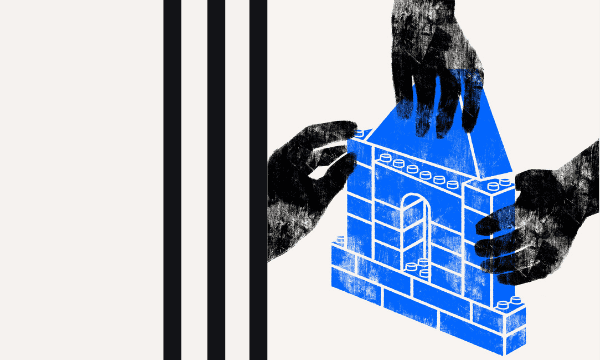
This essay is part of the “Debt Justice Agenda” series of Progressive International’s Debt Justice Blueprint.
But this relationship is marked by a deep asymmetry: while it is our actions that make it possible for banks to lend at low cost, most banks no longer treat this as an obligation to work for us and our communities. Indeed, whether directly or indirectly, a significant proportion of bank lending today goes to large multinational corporations.
This essay makes the argument that cooperative banking provides an alternative, reclaiming power for the people and reorienting banks toward public service.
In countries such as Germany, where a robust cooperative banking sector has thrived since the early 20th century, these banks play an important role in facilitating small-scale community-based lending (see, e.g., here and here). More than that, cooperative banks have fairer ownership, decision-making and accountability structures than private ones.
At a minimum, cooperative banks are owned by customers who are both depositors and share-holders. Cooperative banks can fail and they are members of cooperative bank associations that both regulate and audit each member on a regular basis. Typically, the joint liability of all the banks in the association for any failed bank ensures a robust regime of supervision. And, like all banks, cooperative banks are supported by the recognition of their liabilities as means of payment by the state.
We must re-establish the principle that public support for banks is dependent on bank service to the community. Banks that take the public resources of deposits and direct them to the funding of the financial sector in the form of shadow banking activities or to the support of multinational corporations that have access to public debt markets are misdirecting a public resource. Once we establish this premise, the door opens for a transformation of the banking system in order to serve the interests of the public instead of the interests of a narrow, wealthy subset of the population.
Banks work for our communities, for example, when they support local business activities — including small business activities. This form of bank lending can empower our communities to improve and develop our local economies.
Banks work for our communities when they put in place fair lending procedures that take account of our capacities, our histories, and take a broad view of collateral – by for example including inventory, accounts receivable and equipment under this heading. By doing this, banks facilitate robust local economic activity and provide the means for local firms to grow and serve broader markets. It is important to emphasize that when banks focus on real estate or securities as collateral for their loans, bank lending flows specifically to the well to do and ends up acting as a mechanism by which the public that circulates bank deposits ends up subsidizing the activities of the richest members of the community.
In particular, both multinational corporations and ‘shadow’ banks should be required to get their funding from financial markets. Multinational corporations should not rely on access to either bank loans or to any bank services that provide long-term or short-term guarantees to corporate debt. When multinational corporations are permitted to rely on bank loans and services that are loan equivalents, they are effectively receiving a subsidy from the public in the country or countries whose banks are providing the loans and services, since the public is supporting and subsidizing the banks when it accepts the banks’ deposits as a means of payment.
This relationship of multinational firms drawing on the public resources of the countries whose banks support them needs to stop. (Needless to say, multinational corporations also need to operate without the support of any sovereign guarantees of their debt.)
Shadow banks are financial entities that take a wide variety of legal forms, but always have the characteristic that they have liabilities that are shorter-term than their assets. Shadow banks serve as purchasers for financial instruments that either can’t find buyers on normal debt markets, or where the market for the instrument is narrow. Thus, shadow banks play an important role in increasing the funding available for the instruments in which they invest.
The problem is, however, that typically when one looks under the hood of a shadow bank one finds explicit or implicit bank guarantees that mean that it is actually the banking system that is funding the shadow bank. For this reason, it is important to stop both direct and indirect bank finance of the shadow banking system, since the financial instruments that end up being funded should be forced to raise money on standard debt markets and not through a process of subtly hidden bank finance.
It is time for banking to ‘come out from the shadows.’ Our communities are in dire need of investment: small entrepreneurs who don’t own real estate or securities should be able to turn to their local banks for working capital at reasonable rates and terms, and shouldn’t have to turn to credit cards or internet-based lenders with extractive business models. It is time to redirect our money back to our communities, serving local needs rather than supplying even greater dividends to the super rich. Cooperative banks are a key vehicle for the democratization of the financial system — and so of the vision of debt justice set out in this collection.
Carolyn Sissoko is a member of the Progressive International Debt Justice Collective. Carolyn is Senior Lecturer in Economics, University of the West of England.
Illustration by Namita Sunil. Namita is a New Delhi based illustrator and graphic artist.
From the Blueprint team at Progressive International
We live in a world of debt. The depth and breadth of global “debtification” is difficult to overstate. It is the primary contention of this collection that all these disparate dynamics — hedge funds raking in pandemic profits, students struggling to afford an education, micro-borrowers on the brink of bankruptcy — are different manifestations of the same basic structural mechanism at the heart of the global financial system: the endless cycle of privatized gains and socialized losses. Simply put, the rich get richer, while the poor, by design, remain poor.
The goal of this Collective is the goal of progressive movements around the world, to end that cycle. Read the full Debt Justice Blueprint here. If you’re interested in engaging with us, please write to the Varsha Gandikota-Nellutla, Blueprint Coordinator at [email protected].



